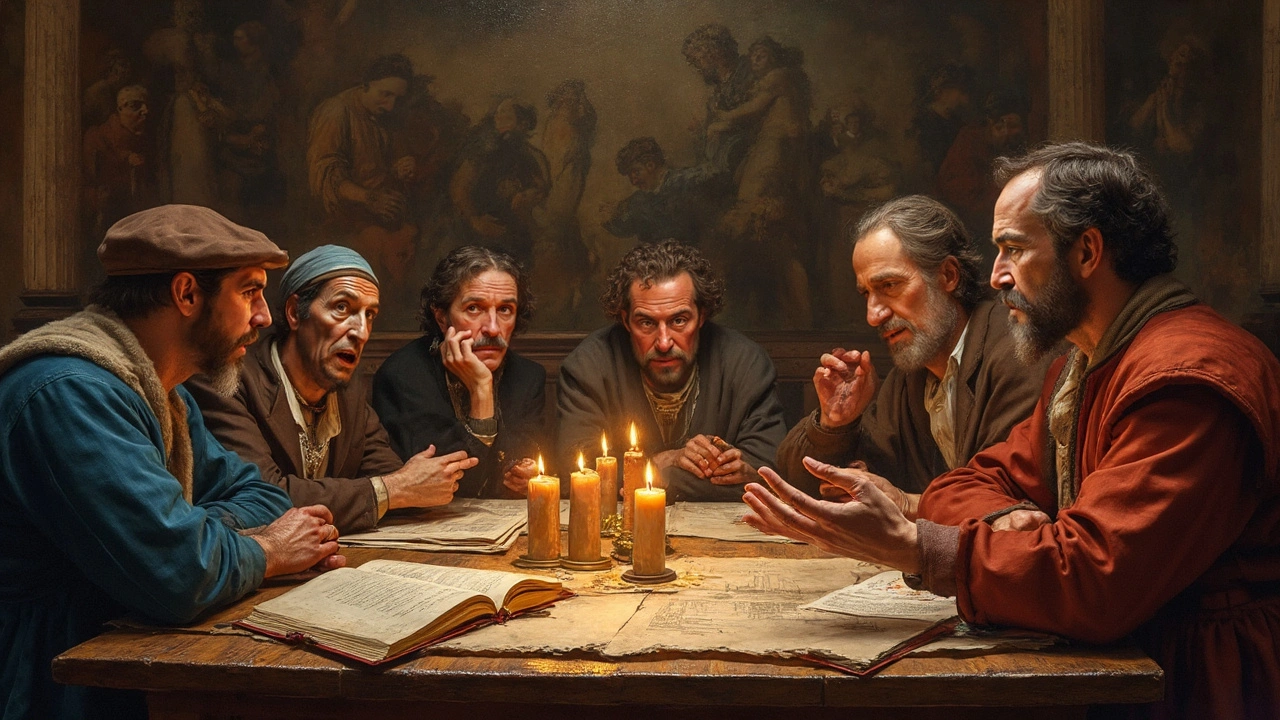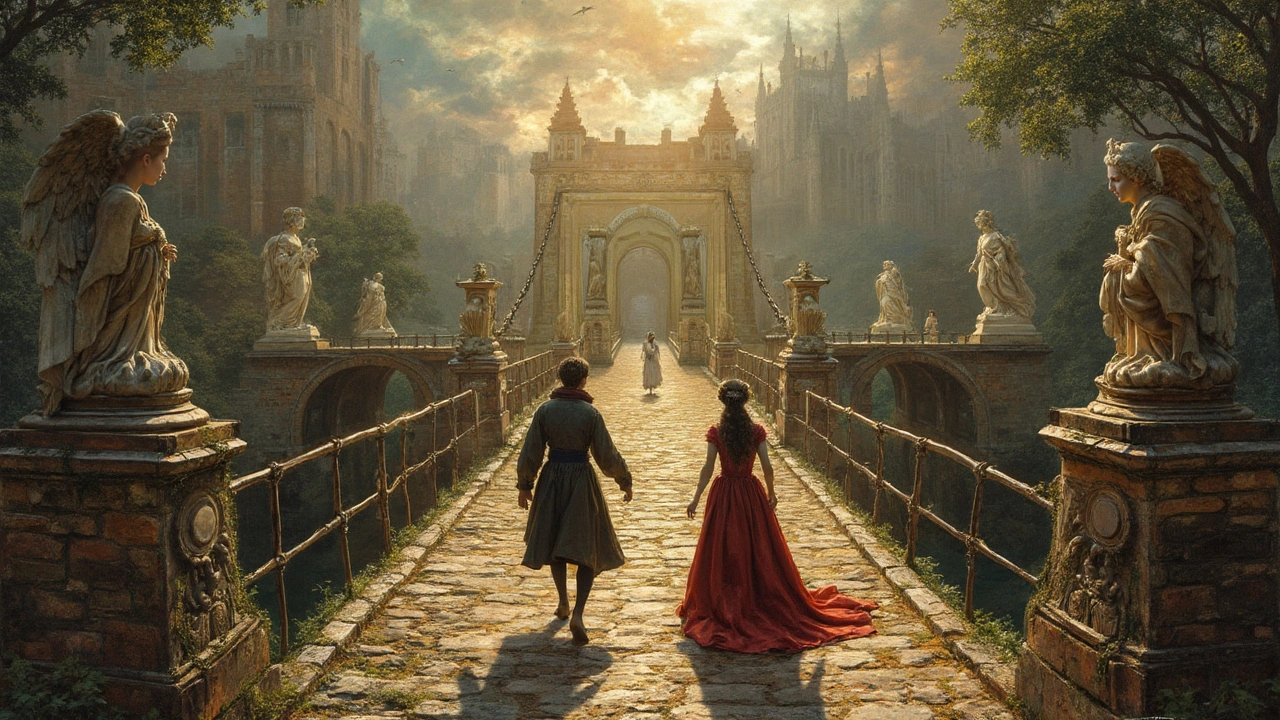How the Renaissance Era Revolutionized Western Philosophy and Thought
 Aug, 16 2025
Aug, 16 2025
Imagine a time when centuries-old ideas were suddenly flipped upside down and put under a magnifying glass. Picture bustling Italian streets where thinkers, artists, and rebels argued loudly in crowded squares, sometimes all night, over questions like, “What does it mean to be human?” or “Do we have the freedom to shape our own fate?” The Renaissance wasn’t just a pretty art period with marble statues and dazzling frescoes. It was the moment when philosophy got a total makeover. It’s wild to consider that without the radical shifts in thinking from places like Florence and Venice, we wouldn’t have today’s science, human rights debates, or even the idea that each of us can chase our own version of happiness. Ready to see just how deep those changes ran?
The Break with Medieval Mindsets: Why the World Needed a Renaissance
For centuries before the Renaissance kicked off around the 14th century, much of Europe’s philosophy was rooted in the Middle Ages’ strict traditions. Think: thick, complicated books written in Latin, available to only a tiny handful of scholars and monks. Back then, the Catholic Church controlled almost every big question. Most people learned that life’s purpose was to prepare for the afterlife, that scientific curiosity was dangerous, and that questioning ancient authorities could get you labeled a heretic. There was little room to wonder about individual worth or personal ambition. That’s not to say there weren’t bright minds—Thomas Aquinas tried to blend religion with logic—but most creative thinking was boxed in by Church doctrine. It got to a point where people seemed less curious about their world and more concerned with not rocking the boat.
By the early 1300s, Europe was shifting. Trade with the Byzantines and the Islamic world fueled access to ancient Greek and Roman texts long thought lost. Meanwhile, growing urban centers like Florence, Milan, and Venice started competing in everything from banking to art to education. Wealthy patrons—basically, the world’s first venture capitalists—funded artists and thinkers. Shortages and plagues (like the Black Death) forced everyday folks to reconsider what life was all about. Everything was ripe for a reset. This was when thinkers started questioning the old ways and hunting for fresh answers, not just in old dusty church texts but in the world and people around them. This was the beginning of something huge—the heartbeat of the Renaissance.
The Rise of Humanism: Putting People at the Center
So, what really set the Renaissance apart? It wasn’t just prettier art or clever politics—it was a belief called “humanism.” What’s that? Humanism is the idea that humans matter, that our thoughts, creativity, and choices have value. Renaissance humanism turned people’s gaze from heavens and saints back down to earth. Instead of obsessing about sin and salvation, humanists got excited about human achievements, emotions, and daily lives.
One of the first movers was Francesco Petrarch, a poet from Italy who lived in the 1300s. He loved digging up old Roman texts and realized that the ancient writers like Cicero and Seneca cared just as much about worries, love, and ambition as people of his own time. Suddenly, it seemed like wisdom didn’t just live in church libraries but could be found in stories, plays, and letters from antiquity. Petrarch even wrote, “Rarely do we find men who attain to great things, who are not inspired by enthusiasm,” setting the tone for a generation that believed in striving and dreaming.
Universities broke away from church controls to teach math, science, and grammar—and began using local languages instead of Latin, making learning far more accessible. Humanists like Erasmus mocked medieval superstition and focused instead on being rational and making the world better. And you know how people today go on about ‘critical thinking’? Thank the Renaissance. Humanists urged people to fact-check what they read, to debate, and to look for evidence, not just accept things because they’d ‘always been that way.’ Here’s where you get the early glimmers of modern skepticism.

Thinkers Who Changed the Game: From Da Vinci to Machiavelli
The Renaissance wasn’t just about abstract debates in universities. Some minds made the era famous for daring ideas, quirky experiments, and honestly, arguments that made a lot of people angry—and then changed the world. Take Leonardo da Vinci: Sure, he painted the “Mona Lisa,” but he was also an engineer and a scientist, obsessed with figuring out how things actually worked. His notebooks are packed with sketches of flying machines, human organs, and inventions nobody had seen before. He treated philosophy as hands-on—dissecting corpses, measuring bones, and recording everything. Leonardo once said,
“Learning never exhausts the mind.”He lived that—with constant curiosity, skepticism, and a will to experiment.
Niccolò Machiavelli was another Renaissance rebel. Forget his reputation as a sneaky political villain: Machiavelli’s “The Prince” flipped traditional ideas of morality. He argued that political leaders should focus on results, not just high-sounding virtues. Was he cynical, or just brutally realistic? Well, kings and presidents have studied his book for centuries. His ideas kicked off whole new discussions about ethics, power, and leadership—ones that still run strong in Ivy League lecture halls and election campaign rooms.
Don’t miss Michel de Montaigne in France, who invented the personal essay—a new way of exploring philosophy not just as abstract rules, but as stories, questions, and honest confessions. He’d ask, “What do I know?” then spend pages wrestling with doubt. His approach, messy and relatable, paved the way for introspection and the freedom to admit uncertainty—a huge leap from the old “know your place” mindset. His motto? “Que sais-je?” or “What do I know?”—exactly the kind of critical thinking modern philosophy loves.
Where Science Meets Philosophy: The Big Smash-Up
Renaissance philosophy charged headfirst into science and changed how people saw the universe. Before this era, most folks thought Earth stood at the center of an unchanging cosmos, surrounded by perfect heavenly spheres. Then along came Nicolaus Copernicus, who in 1543 dared to publish a book saying, “Guys, maybe the sun—not the Earth—is at the middle.” It took guts. Galileo Galilei took these ideas to the next level, building telescopes and seeing Jupiter’s moons for the first time. Instead of just reading Aristotle, people now relied on observation and testable evidence, fueling the Scientific Revolution.
Here’s a cool fact: By the 1600s, you’d find heated coffeehouse debates about gravity, planets, and evolution—far outside the old university walls. Giordano Bruno, for example, imagined an infinite universe full of planets like our own. Sure, he got burned at the stake for his wild ideas, but step by step, Renaissance thinkers pushed philosophy and science to blend in ways the world had never seen.
| Name | Contribution | Key Year |
|---|---|---|
| Leonardo da Vinci | Applied firsthand observation in art and science | 1500 |
| Niccolò Machiavelli | Theories on power, leadership, and ethics | 1513 (The Prince) |
| Nicolaus Copernicus | Heliocentric model of the solar system | 1543 |
| Michel de Montaigne | Essays that placed personal doubt and questioning at the center of philosophy | 1580 |
| Galileo Galilei | Experimental method in science, telescopic discoveries | 1610 (Sidereus Nuncius) |
What’s wild here is that the Renaissance didn’t just spur specific discoveries—it shifted the underlying rules for how people thought. Experimentation, tolerance for uncertainty, and openness to new evidence replaced faith in age-old authority. That shift sits at the core of modern science, psychology, and social theory. If you casually talk about “evidence” or “hypotheses” today, that’s pure Renaissance legacy.

The Lasting Legacy: How Renaissance Philosophy Shapes Us Now
You might think of Renaissance philosophy as long gone, but its fingerprints are everywhere. The idea that philosophy isn’t just for wise old men in togas, but for anyone willing to ask big questions—yeah, that’s from the Renaissance. Our schools, with their focus on critical thinking? Direct line. Political revolutions and the push for democracy grew from reading humanist texts about individual value and responsibility.
Here’s a tip if you want to channel some Renaissance spirit: Next time you debate a sticky topic—ethics, politics, even tech—ask yourself, “What would a 16th-century humanist do?” They’d dig deep, challenge old assumptions, and look at the real world for answers. Try reading a translation of Erasmus or Montaigne (his humorous takes on daily headaches are shockingly modern). Jump into a virtual lecture on Copernicus to see how risky, and necessary, it can be to challenge accepted authority. Or, keep a sketchbook like Leonardo, doodling and jotting down weird ideas, mixing fact and imagination. Renaissance thinking was bold, sometimes messy, but always hungry for truth.
Even those famous Renaissance squabbles—whether humans are essentially good or evil, whether rulers should chase virtue or just results—show up on social media, in classrooms, and in parliaments today. Western society’s respect for questioning, for evidence, for the wildest out-there thinking, traces right back through Petrarch, Machiavelli, da Vinci, and the rest. If you value your freedom to ask “why?” and chase the truth wherever it leads, you’re part of their ongoing revolution. That spirit—restless, creative, and always searching—is what truly defines the era that revolutionized philosophy.